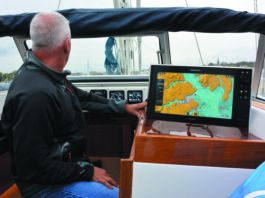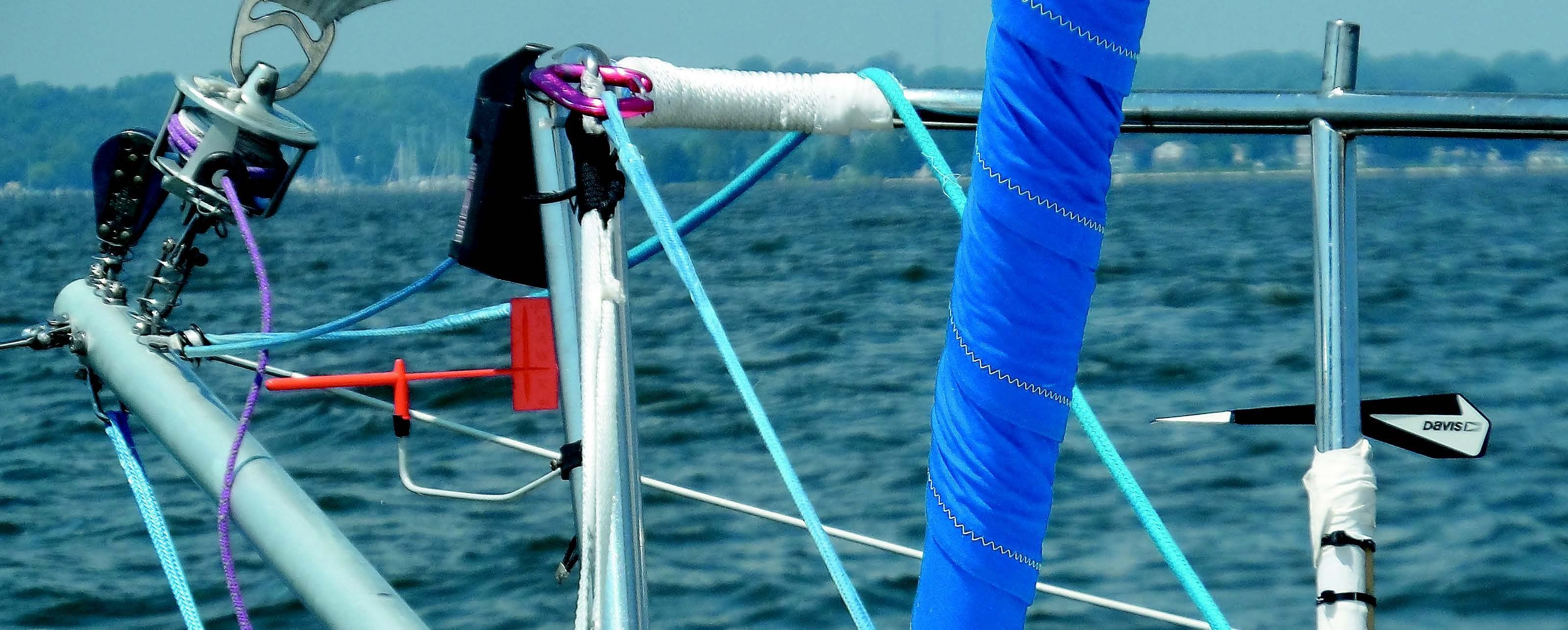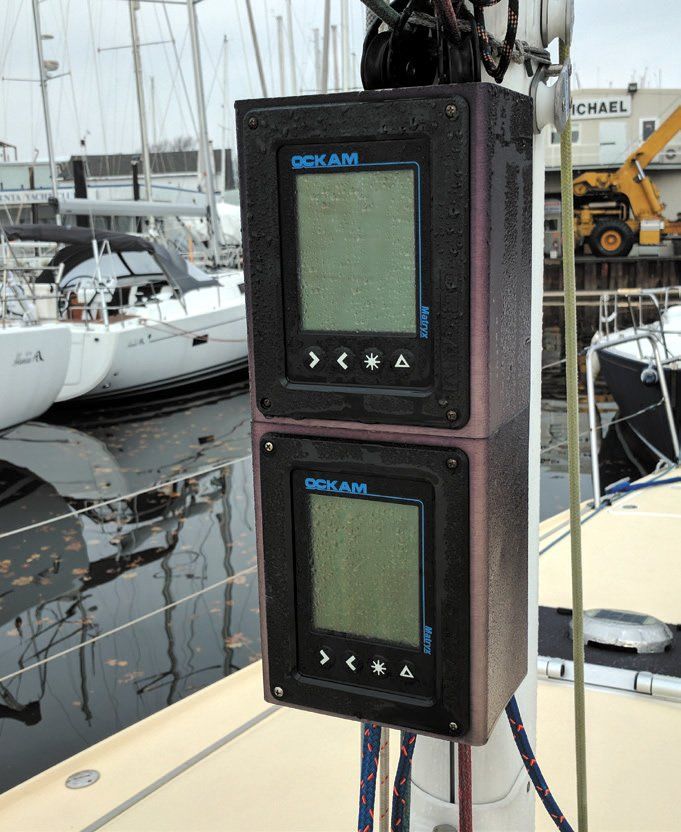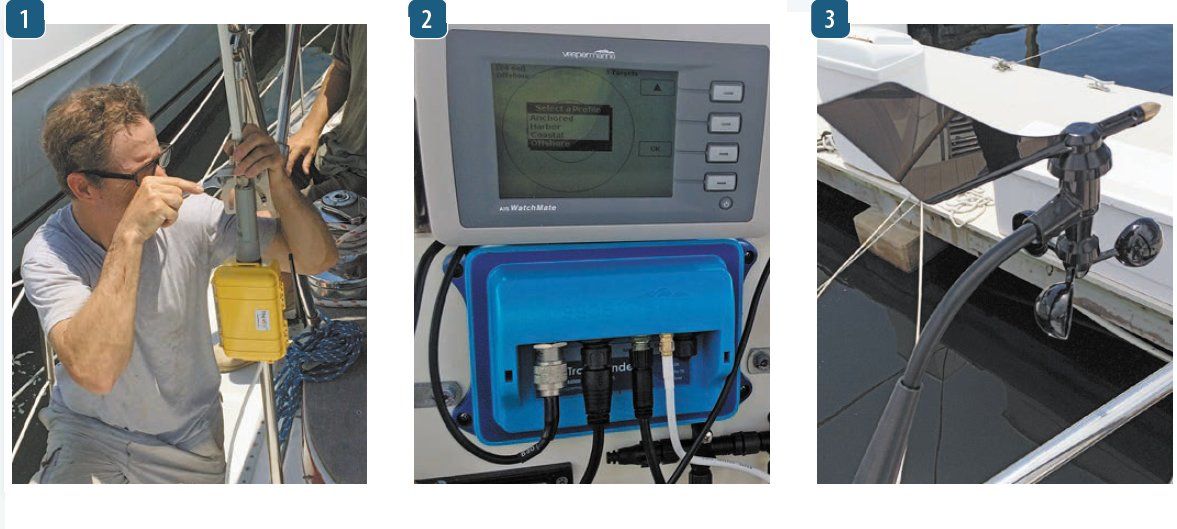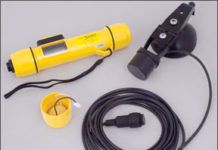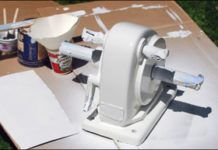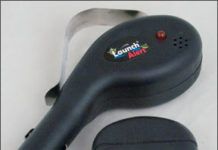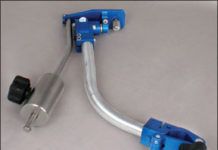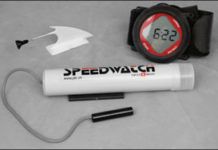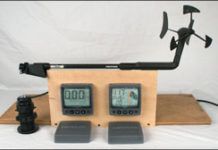Mainsail Track Hardware
The systems used to attach a mainsail to its mast have come a long way since the time of hoops and parrels, and the variety of options now available for retrofitting plays to the advantage of the consumer.
Marine Electronics: Practical Sailor Tests Portable Depth Sounders
Ordinarily Practical Sailor is loathe to apply a $100 battery-operated solution to a problem easily solved with a chunk of lead and some 3/8-inch line. However, portable depth sounders take the leadline to the next level. Resembling small flashlights, these handheld sounders are designed to be portable, easy to use, and reliable. They are good tools for probing creeks and narrow passes in a dinghy, and also can serve as backups to a primary sounder. This series of tests took a look at the Hawkeye 22PX from Norcross Marine and the Speedtech Depthmate SM-5A. On-the-water testing comprised a series of six tests in specific locations. Each unit was tested in murky shallow waters with a soft mud bottom; moderately clear waters with grass bottom; and clear waters with sand bottom. Testers also evaluated whether the sounders could read through hull materials, their durability and waterproofness, and whether their digital displays could be read in bright sunlight and at night.
PS Advisor: Resurrecting a Windlass
I’ve got an old manual anchor windlass with a badly corroded gypsy that needs to be replaced. There is a 1:1 bronze "cross" on the outside of the gypsy—where the lever fits to turn it when not using the geared mechanism. Unfortunately, I can’t figure out how to get the bronze cross off, which needs to happen in order to replace the gypsy. There’s a grease zirk/fender washer on the outside of the cross, but unscrewing it still doesn’t get the cross off.
Trailer Helper
The concept behind Quality Mark Inc.s Launch Alert is simple: A 12-volt DC wireless receiver/alarm plugs into a cigarette lighter outlet in the towing vehicle, and a waterproof, battery-operated transmitter/sensor mounts on the trailer. To install, you attach the transmitter (using a very sticky peel-and-stick backing) to the trailer frame so that its sensors are at your desired "waterline." When the contacts are immersed, the receiver in the vehicle beeps loudly.
Stabilizing Cameras and Video Cameras Underway
Anyone who has tried to steady a camera aboard a boat knows how difficult it can be to keep the equipment dry, compose the shot, and level the horizon, all the while keeping yourself and your camera on board. Given hull vibrations, wave action, and the unevenness of the deck, setting up a stable work platform presents challenges that marine photographers try to solve using a variety of camera mounts. Practical Sailor recently tested three types of camera mounts: a beanbag camera mount from Omnipod, the Camo-Pro 7; two flexible devices from GorillaPod, the heavy-duty GorillaPod Focus and the GorillaPod SLR Zoom; and specialized, self-leveling camera mounts from Horizon True.
Portable Sailing Tools for Tracking and Tuning Boat Speed
Practical Sailor recently spent a week experimenting with three handheld products geared toward performance sailors. These portable tools are for tracking and improving sailboat speed. Unlike conventional portable GPS units, which have relatively small displays and deliver a wide range of navigational data, these products display large digits that can be read from a distance, and the view options are limited to those that relate exclusively to speed and racing performance. Practical Sailor tested the Speedwatch and two GPS units, Velocitek SC-1 and SpeedPuck. These instruments make good training tools for young sailors and will give all around-the-buoy sailors the ability to quickly quantify performances.
Multiplexing Marine Electronics
In an effort to find an inexpensive, reliable way to connect a PC (or Mac) to our onboard electronic navigation system, Practical Sailor testers scouted basic NMEA 0183 multiplexers with good track records. We zeroed in on the easy-to-install MiniPlex Lite from Holland-based ShipModul. This multiplexer was one of the first high-speed NMEA 0183 multiplexers capable of handling the data rates required for some of the newer electronics like AIS receivers. With very little effort, the Mini Plex Lite allowed us to network our Dell Latitude D620 laptop, AIS, GPS, and chartplotter, and it handled the data transfer without a glitch. Our chief gripe: This entry-level model uses the laptop for its power source.
GPS Receivers for Smart Phone Navigators
During our testing of pocket navigators for the December 2009 issue, we examined other approaches to propagating a GPS signal around the boat and found some viable alternatives. Several aftermarket options can turn smart phones or PDAs into handheld navigation tools by supplying or sharing reliable GPS data. Practical Sailor looked at a Bluetooth-enabled Globalsat BT-338 GPS receiver with the SiRFStarIII chipset and Franson Technology’s GPSGate software for Windows and Windows Mobile, which was designed specifically for the task of sharing GPS data. Testers found both utilities to be good choices for the job, however, we still caution against relying solely on a PC-based navigation network onboard.
Mailport: 11/09
To keep from being pulled under in a collision between a tanker and my sailboat, I "pulled the ripcord" to release the snap shackle on my Standard West Marine Safety Tether . The tether release lanyard was outfitted with a series of balls. (See bottom photo at right.) I had rehearsed reaching for and feeling the release toggle many times so it would come naturally in an emergency. The balls have a distinct feel. There was nothing on my PFD or foul-weather jacket that resembled them. The replacement tether I bought from West Marine (ISAF Specification Safety Tether, No. 9553504) has a new toggle on the snap-shackle release lanyard that consists of an open triangle of plastic. This is dangerous, in my opinion! In my first few hours of using the new tether, in moderate sea conditions, I managed to snag the triangular loop on something and release the snap shackle. I am now replacing all triangular loop pulls with bead pulls that I have crafted myself.
Testers Take Tacktick and Nexus Wind Instruments for a Spin
Practical Sailor testers compared Tackticks improved Race Master system to the Nexus Start Pack 3, a hybrid wired/wireless system. The Tacktick Micronet wireless wind instrument, a compact system featuring wireless display and a masthead sensor, has a strong following among racers. It has proven to be a good choice for those sailors serious about improving race performance as it has many options for tracking performance on the course in real time. Its ability to work with a 12-volt system makes it a good choice for small boats. The versatile, expandable Nexus hybrid has an impressive and intuitive interface and a graphic analog wind representation. It provides all of the basic functions a cruiser or racer uses most, and testers found the analog wind display appealing.

































